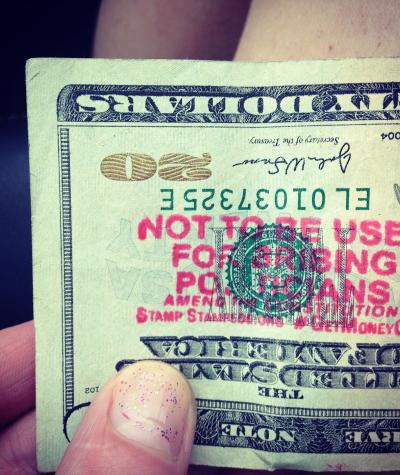The inauguration of President-elect Donald Trump is shaping up to be the smallest party in years—and by far the most expensive, with Trump raising an eye-popping $100 million-plus for the festivities, almost double what Obama raised for his 2009 swearing-in.
And the incoming Trump administration—like some of its predecessors—is quite literally selling access in exchange for those big checks. Donors who give $1 million or more, for example, are invited to an “exclusive event with select Cabinet appointees and House and Senate leadership” and dinner with Vice President-elect Pence at the National Portrait Gallery.
During his campaign, Trump could not accept more than $5,400 from a single donor, and corporations were banned from giving at all. He is bound by similar anti-corruption limits as he looks towards 2020. But for the inauguration, all bets are off.
Under federal law and FEC rules, there are no limits on how much a donor can give to the incoming president’s inauguration committee. Corporations and unions can give, too. The only limits are that foreign nationals can't give, and donors over $200 must be reported to the FEC (although the report isn't due for 90 days).
In other words, after a president wins the election - but before he is sworn-in—it is an influence-buying free-for-all.
Why would we think that the President-elect raising million-dollar-plus contributions for his inauguration with the explicit promise of access wouldn’t present the same or greater danger of corruption as a campaign contribution?
Most Expensive Inauguration Ever Will Have Smallest Parties
One question is what Trump will do with the $100 million raised.
The actual swearing-in ceremony, where the president-elect puts his hand on a bible and recites a 35-word oath, is publicly funded. Millions in federal funds go towards the swearing-in ceremony, security, maintenance, construction, bleachers, fencing and cleanup. The government of the District of Columbia is expected to spend tens of millions on law enforcement, first responders, transportation, and communication.
The corporate and individual funds raised by Trump will instead bankroll the president-elect’s inaugural ball, welcome concerts, and an array of private events around D.C.
Yet, where Obama stretched the $53 million raised for his 2009 inauguration across five days of events, Trump raised $100 million for only three days of activities, and expects smaller crowds. Past presidents have staged four-hour parades; Trump’s is expected to last 90 minutes.
Trump’s team says he plans to donate any leftover funds to an undisclosed charity. But given his record with regard to charitable giving, it isn't clear how exactly this is going to work.
Buying Influence
Not surprisingly, the top reported contributors to Trump’s inauguration have business before the government. Boeing, which gave $1 million, relies heavily on federal government contracts. Oil giant Chevron, which gave $500,000, receives some federal contracts and has a keen interest in the administration’s energy policy.
In this regard—and despite Trump’s pledge to “drain the swamp”—what’s old is new again. As McClatchy reported:
Occidental Petroleum, one of [Bill] Clinton’s donors, for example, reached a settlement with the Energy Department in a price-fixing case after Clinton took office. AT&T, one of Obama’s donors, lobbied for regulatory approval of a merger with rival T-Mobile.
Despite relaxed rules on inaugural fundraising, past president-elect’s have voluntarily adopted fundraising limits in order to promote public trust in their administration. Trump has not.
During President Barack Obama’s 2009 inauguration, for example, his team capped individual contributions at $50,000 and banned all donations from corporations, PACs, and lobbyists--and still raised $55 million for the five days of festivities.
Obama rolled-back those rules for his second term, lifting the contribution limit and accepting big money from corporations, raising $43 million.
President George W. Bush established a $250,000 contribution cap on both of his inaugurations, raising around $40 million each.
Trump’s only self-imposed limit is on money from lobbyists—although lobbyists have been collecting checks on Trump’s behalf, and have been giving to his transition.
Trump has also declined to voluntarily disclose his inauguration donors before inauguration day (just as he failed to follow precedent in releasing his tax returns during the campaign). Those donors won’t be revealed until 90 days after the inauguration.
The swamp continues to grow deeper.
